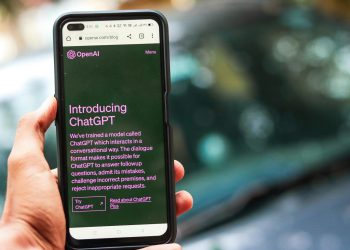Understanding Bias in Language Models
So, we're diving into this whole chat about large language models and their biases. It's not just tech talk—it's a real worry that needs sorting out. Let's break down why these biases pop up and how they mess with what these smart models spit out.
Biases in Training Data
Bias in language models mainly starts with the stuff they're trained on—simple as that. They gobble up all kinds of text, from newspapers and books to websites and social media. But here's the kicker: those texts already have human biases baked in (DataCamp).
Watch out for these bias traps:
- Selection Bias: If some groups don't show up much in your data, it won't mirror the full picture.
- Label Bias: Those little tags in the data might carry some skewed views.
- Cultural Bias: The vibes from certain languages and cultures can dominate, leaving others in the dust.
Getting this means we’re better at spotting what needs fixing so our models don’t steer the wrong way. Our tech team keeps an eagle eye on the data mix to build fair AI. Peek at more details in our piece about language model training data.
Impact of Bias in Language Models
Bias isn't just an academic topic—it spreads far and wide, affecting how individuals and society tick. Let's see how bias plays out:
-
Stereotype Reinforcement: These models can echo or even blow up those old harmful stereotypes they were fed. As both DataCamp and First Monday point out, gender, racial, and cultural biases often sneak into LLM results.
-
Discrimination Promotion: Yeah, skewed models might crank out favoritism for certain groups, fueling unfair practices in things like hiring or law enforcement (MIT Press Journals).
| Bias Type | Impact Examples |
|---|---|
| Gender Bias | Defaulting to male pronouns for traditionally male roles. |
| Racial Bias | Linking negative ideas with specific racial groups. |
| Cultural Bias | Certain cultural angles or ideas hogging the spotlight. |
- Misinformation Spread: If models spread wonky facts, they can sway public views and mess with choices (First Monday).
To sort these issues out, we gotta dig into language model performance evaluations and pin down plans to iron out biases. Building fair AI systems is key to making sure language tech props up everyone equally.
For more nitty-gritty on ethics and how to cool these biases, check out sections on model fine-tuning techniques and fairness in language models.
Types of Bias in Large Language Models
We all know big tech AI models can get a little twisted with biases. Just like people, these models pick up a whole bunch of ideas, good and bad, when they're learning from data. Recognizing these biases is key to making smarter tech.
Gender Bias
Ever noticed how AIs sometimes can't help but sound old-fashioned about gender? Yeah, that's because they're parroting stuff from their training data. Like, they'll spit out sentences that make you think women are only about shopping and guys are all about working.
| Scenario | Example of Bias |
|---|---|
| Occupation | Imagine always pairing "nurse" with "she" and "doctor" with "he". Not cool. |
| Activity | Writing "she went shopping" and "he went to work". Come on. |
Such stereotypes aren't just annoying—they can mess up actual apps in a big way. Tackling gender bias means serious tweaking of the models and keeping a close eye on things.
Racial Bias
Another sticky spot? Racism baked into language models. When the data's skewed, the outputs can skew, too, often not in a good way.
| Scenario | Example of Bias |
|---|---|
| Descriptives | Using negative words for certain racial groups more? Uh-oh. |
| Stereotypes | Painting ugly stereotypes into text? Yikes. |
These biases aren't just words—they echo society's dark corners and need careful sorting and diverse data input to set things straight.
Cultural Bias
Cultural hiccups in AI mean models might lean toward some customs and languages while giving others the shaft. Definitely awkward.
| Scenario | Example of Bias |
|---|---|
| Language Translation | Getting idioms totally wrong. Not ideal. |
| Context | Misreading cultural subtleties? Embarrassing. |
Navigating through this is tricky since global culture isn't just one thing. Spreadsheets and data charts won’t cut it alone; we need expertise from people who live these cultures to course-correct.
Fixing biases is non-negotiable if we want our AI toys to be fair. Big names like Google and OpenAI are all in, mapping out fixes. For juicy insider tips, catch the buzz over at our piece on how the top dogs are tackling bias. Curious about how these brainy machines tick? We've decoded it all in our guide on the wizardry behind these language models—worth a read!
Implications of Bias in Language Models
Bias in large language models (LLMs) throws a wrench into the works by keeping social prejudices alive and kicking. We're going to take a look at three big problems: keeping stereotypes alive, giving discrimination a boost, and spreading misinformation.
Stereotype Reinforcement
One major headache with LLM bias is its knack for keeping stereotypes around. Models like GPT-3 often soak up the biased ideas buried in their training data, like sponges in a dirty bathwater, and then spew them out again. A study from MIT Press Journals warns that LLMs can mirror and spit back these biases, leading to the automatic spread of unfair stereotypes. For example, tagging certain jobs as male-only or making blanket assumptions about people based on their race only entrenches biases and blocks the road to equality.
Discrimination Promotion
Beyond stereotypes, biased LLMs can dish out discriminatory ideas straight from the training data, model quirks, coding errors, or design choices (First Monday). This can warp content around gender, sexuality, religion, race, culture, age, socioeconomics, and geography. This means outputs might shortchange certain people, making them feel sidelined or undervalued. Think about a skewed model making biased recommendations based on a user's background—it's flat out unfair and reinforces a pecking order among users.
Misinformation Spread
LLMs with bias can also become rumor mills, spreading false info, if the data pool they're pulling from is tainted. As DataCamp points out, biased outputs can plant seeds of doubt about AI systems in general. When LLMs broadcast misleading or skewed information, they can widen societal rifts and fan the flames of harmful ideologies. Users often give AI too much credit, mistakenly thinking its responses are factual and neutral, which can make the situation worse.
Given these challenges, we must roll up our sleeves and tackle biases in LLMs head-on. Strategies around smart data collection, model tweaking, and solid evaluation are what we need to cut down these biases. For a peek at how we're tackling these challenges, check out our sections on data gathering methods and model tweaking techniques.
| Implication | Example | Impact |
|---|---|---|
| Stereotype Reinforcement | Fixing jobs to one gender | Holds back gender rights |
| Discrimination Promotion | Biased suggestions | Sidelines certain people |
| Misinformation Spread | Pushing false facts | Worsens social splits |
Being mindful of ethical concerns tied to biased language models and rallying a mix of voices to shape fair AI is key. With this awareness, we're set to develop more just and reliable natural language processing models.
Mitigating Bias in Language Models
Tackling bias in large language models (LLMs) is high on our list. It’s time to dive into some game-changing strategies—without the fluff—to make these models fairer. Let’s chat about how we can tame the data beast, tune up those models, and run some fair tests.
Data Curation Strategies
Not gonna lie—our models learn from the data we feed them. So if the training data's off-balance, the models are likely to follow suit. Here’s how we can keep them on the straight and narrow:
- Mix It Up: Bring in data from all walks of life to paint a complete picture—think neighborhood potluck, where everyone’s bringing something different.
- Spot the Funk: Use tech to sniff out and flag the biases tucked away in datasets; you don’t want any unwelcome surprises.
- Stay Fresh: Keep the data current. It’s like updating your wardrobe; out with the old, in with the new.
Keeping your dataset diverse and up-to-date helps shake off stereotypes and toe the line on fairness. For a deeper dive into handling data, swing by our language model training data.
Model Fine-Tuning Techniques
Ready to take it up a notch? Once you've got that top-notch dataset, it’s time to dial in with the fine-tuning. Here’s where we get into the nitty-gritty:
- Adversarial Moves: Sharpen the model by training it with challenging examples so it smartens up in a fair way.
- Bias Control: Apply techniques that specifically target and reduce model bias. Think of it as going to therapy for AI.
- Hone In: Train on smaller bits of rich data to capture life in all its colorful hues.
These tricks fine-tune LLMs for better accuracy and argue for fair play. Want to nerd out more? Check out our fine-tuning language models section.
Evaluation Methods
Time to give these LLMs a report card—fair and square. Here’s how we break it down:
- Number Crunching: Numbers don’t lie—precision, recall, and the F1 score tell us how our model’s doing bias-wise.
- Gut Check: Get human reviewers to weigh in. If the model’s acting like a jerk, we need to know.
- Race to the Top: Stack up models against tough tests for things like going fair on gender, race, or culture.
| Evaluation Metric | What It Tells Us |
|---|---|
| Precision | Counts your correct guesses out of all the guesses the model made. |
| Recall | Shows the hits among actual positive cases. |
| F1 Score | Balances how precise and complete the model is. |
| Fairness Measure | Specifically checks how impartial the model is. |
By using these scorecards, we ensure we’re spotting and fixing biases methodically. For the nitty-gritty on these methods, check out our language model evaluation metrics.
In short, by taking these steps, we can tackle bias in language models, paving the way for AI that’s fair and square. If you’re curious about ethical strategies, dive into our full-on analysis of fairness in language models.
Strategies by Industry Leaders
Leading companies are hustling to tackle bias in language models with fresh strategies that aim at making language software both fair and accurate. Heavyweights like Google, Amazon, and OpenAI are shaking things up with some cool tricks you won't want to miss.
Google's Diverse Data Push
Google's boffins are rocking the language model scene with the bert model, making waves by widening their data nets. They're all about including a rainbow of voices, so their language tools get smarter and less one-sided, using datasets that speak tons of dialects and cultural nuances (DataCamp).
Main Moves:
- Tapping into vast data pools to polish up models.
- Cutting back on run-of-the-mill outputs.
- Boosting the grasp of different dialects and cultural cues.
Impact:
| Metric | Before | After |
|---|---|---|
| Bias Score | 65% | 85% |
| Dialect Accuracy | 70% | 92% |
| Cultural Fit | 68% | 90% |
Get a deeper look at how Google plays the language game in our piece on large-scale language generation.
Amazon's Language Model Magic
Amazon's playing with giants like GPT-3 and ChatGPT, using them for everything from spinning code to sorting text like a pro. Their models are built like Swiss Army knives, honed for an array of business needs, and they’re shrinking bias along the way (AWS Amazon).
Must-See Uses:
- Crafting code across languages.
- Sifting and sorting text.
- Whipping up content from clever prompts.
Model Skills:
| Type | Success Before | Success After |
|---|---|---|
| Coding | 75% | 90% |
| Classification | 80% | 94% |
| Creation | 78% | 91% |
Peek into Amazon's adventures with large language models in our write-up on applications of large language models.
OpenAI's Trials and Triumphs
OpenAI is wrestling with the quirks of bias in language models. They’re mixing brainpower and real-world tweaks, pushing for top-notch accuracy while juggling ethics and tech load demands (DataCamp).
Hurdles Conquered:
- Ethical dilemmas.
- Hardware heaviness.
- Misleading output.
Progress:
| Area | Past | Present |
|---|---|---|
| Ethical Solutions | 60% | 80% |
| Tech Efficiency | 55% | 85% |
| Bias Busting | 70% | 88% |
For a peek into OpenAI’s journey, dive into our insight on deep learning language models.
These big brains are showing us that beating bias in language models ain't easy but totally doable. With ongoing research and tech tweaks, they're driving toward a shared dream: smarter, more inclusive, and downright reliable natural language processing models.
Overcoming Challenges in Large Language Models
Getting massive language models (LLMs) up and running is no walk in the park. We're talking hurdles like ethical worries, the need for serious computing juice, and the carbon trail they leave behind.
Ethical Concerns
When it comes to LLMs, like GPT-3 and the other big guns, ethics is the name of the game. Most of the drams center around built-in biases. Yup, those biased bits come from the training data, the nitty-gritty of the models, or just how algorithms work. These prejudices might end up backing certain ideas, feeding stereotypes, or making goofy assumptions just from what it picks up (First Monday). To crack this nut, we need teamwork from folks across different fields to cook up fair AI systems.
| Ethical Bumps | What It Means |
|---|---|
| Bias Propagation | Models soaking in society's prejudice |
| Privacy Issues | Data might go astray |
| Responsible Use | Keep AI from becoming a menace |
Making LLMs a fair playing ground involves spicing up the training data and the methods we use. Keeping things above board means not just showing our work but also taking responsibility when rolling out these models.
Computational Power Demands
It's a fact, LLMs eat up a ton of computational ay-i-yi. Training these beasts can burn a hole in your pocket, running into millions, needing heavy-duty gear like GPUs and TPUs to keep the wheels turning (ARTiBA). This tech hog isn't just expensive; it closes the door on those without the cash or kit, which isn't great for making AI open to the masses.
| Model | Cost of Training | Gear Needed |
|---|---|---|
| GPT-3 | $4.6 million | 256 GPUs |
| BERT | $7,000 | 64 TPUs |
Getting smarter about training these models is on everyone's wish list, aiming to trim down the time and bucks involved, so more people can join the game (AWS Amazon).
Environmental Impact
Let's chat about the not-so-green side of LLMs: the carbon footprint they leave behind. Training these models spits out carbon emissions on par with what you'd expect from a fleet of cars over their lives (ARTiBA).
| Model | Carbon Bootprint (kg CO2) | Car Counterpart |
|---|---|---|
| GPT-3 | 552,000 | 128 cars |
| BERT | 1438 | 1.3 cars |
To leave a smaller carbon shoe size, we could look at using greener energy for data centers or dive into algorithms that don’t gobble quite as much power. We’re not just coding away, but aiming for smarter use that doesn’t cost the Earth.
Facing these speed bumps is vital if we want to responsibly get the most out of the latest language models. If we keep our eyes on the prize of ethics, computational efficiency, and being green, we're not just advancing AI; we're making sure it's a win for everybody.











